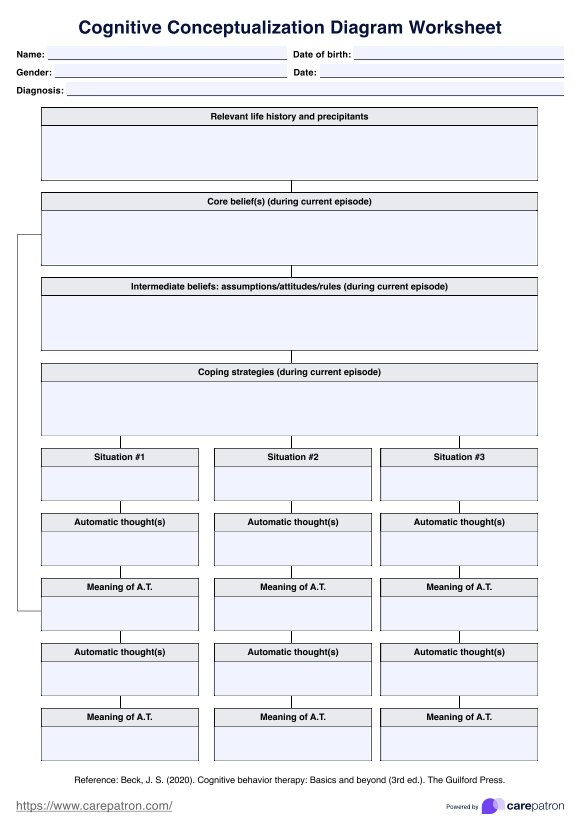Each person's cognitive model works as a framework therapists use to understand a client's problems. It focuses on how they think and interpret situations and the beliefs that underlie their emotions and behaviors.

Cognitive Conceptualization Diagram
Create a visual map to help explore the connection between a client's experience and response and their underlying thoughts and emotions.
Use Template
Cognitive Conceptualization Diagram Template
Commonly asked questions
By understanding a client's thinking patterns, therapists can challenge negative thoughts and teach skills for developing healthier, positive coping mechanisms.
No. Diagnosis focuses on categorizing a mental health condition based on symptoms. Conceptualization deepens the psychology of specific experiences and thoughts behind those symptoms.
EHR and practice management software
Get started for free
*No credit card required
Free
$0/usd
Unlimited clients
Telehealth
1GB of storage
Client portal text
Automated billing and online payments











